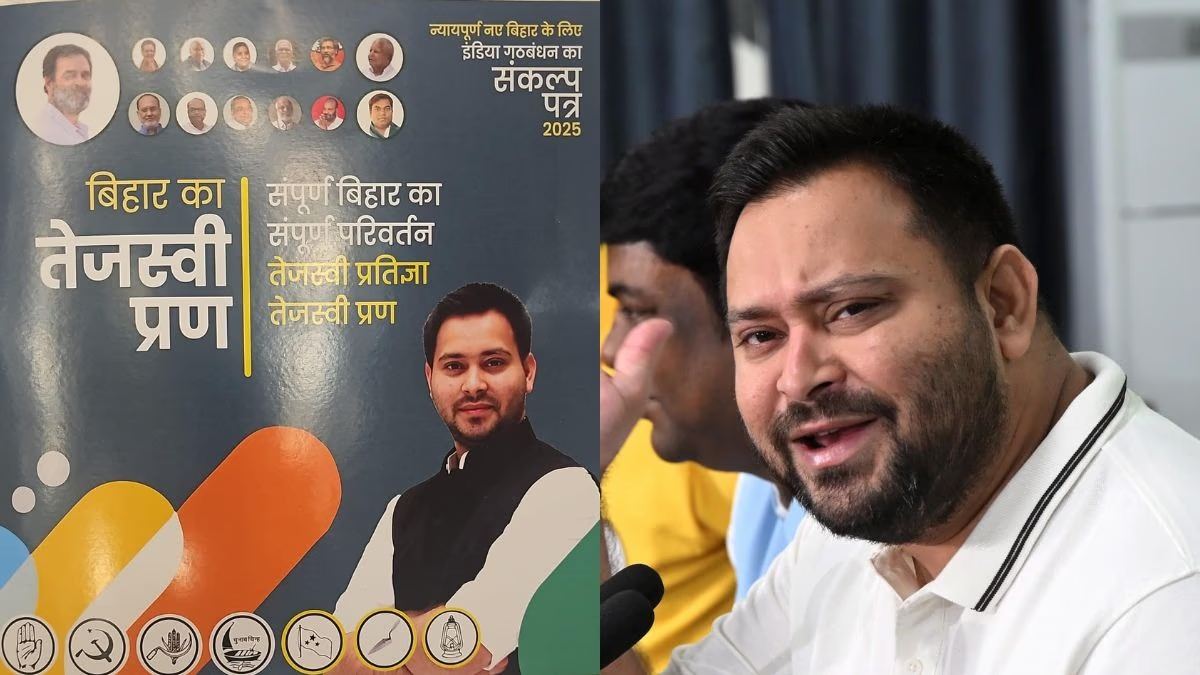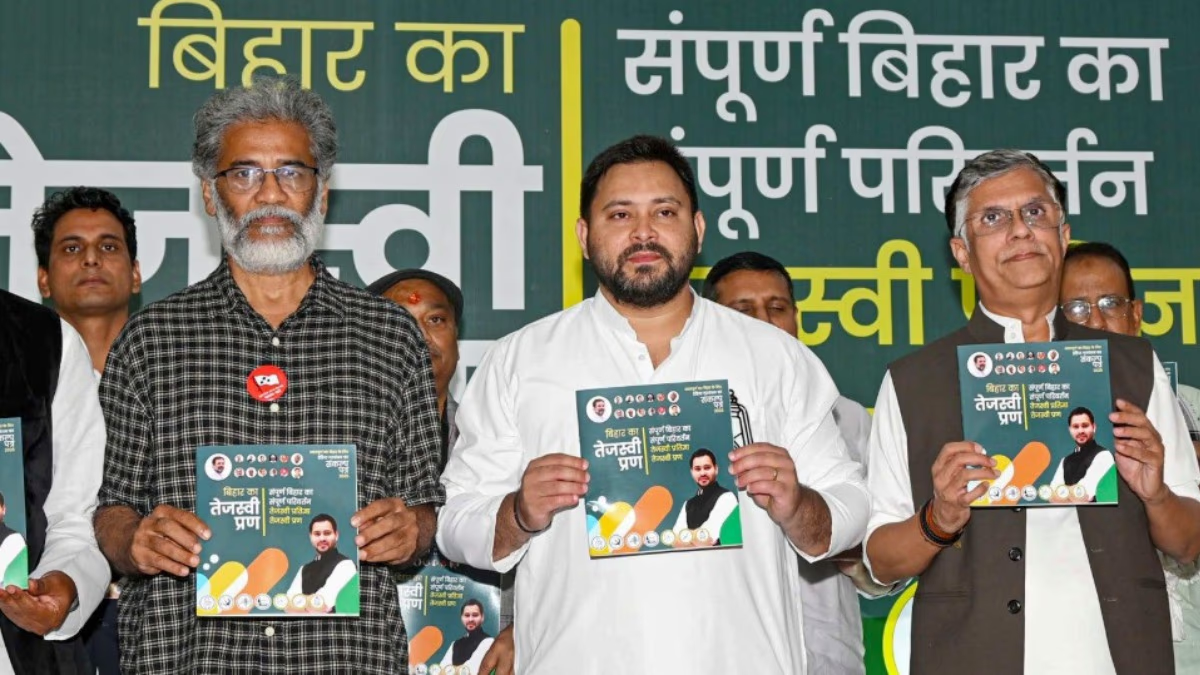Today, Tuesday, the Mahagathbandhan released its manifesto in Bihar, aptly titled 'Bihar's Tejashwi Pledge.' This title solidifies the narrative that RJD's allies have gracefully accepted their role as followers. Notably absent were prominent Congress leaders on the stage, with spokesperson Pawan Khera’s presence signaling Congress's reluctant attendance. Missing too was Krishna Allawaru, Congress's Bihar in-charge.
Recent days have seen controversy over Tejashwi Yadav’s leadership style. With the manifesto named 'Tejashwi Pledge,' such speculation gains legitimacy. Rivals often label Tejashwi as arrogant, but internal coalition dialogues bringing this to the fore merit scrutiny. The key question is whether Tejashwi's style might be the Achilles' heel for the alliance in upcoming assembly elections.
The Political Impact of Seat-Sharing Dominance
Tejashwi Yadav's strategy of maneuvering the coalition is evident in the seat-sharing arrangement. RJD secured 143 seats, whereas allies like Congress received 60, CPI 9, CPI(M) 4, CPI(ML) 20, and VIP 15 seats respectively.
Though Congress deemed this unfair, even Tejashwi's Delhi trip and meet with Rahul Gandhi couldn’t finalize a formula. There's no denying that the voter rights rally with Rahul Gandhi catapulted Tejashwi to national fame. While RJD may be stronger than Congress in Bihar, Rahul Gandhi’s presence enlivened the rally. Still, Congress received fewer seats than in 2020, despite a better strike rate in recent parliamentary elections.
As of the nomination deadline for the 2025 Bihar elections (21-22 October), no consensus on seat-sharing within the Mahagathbandhan (RJD, Congress, Left parties, VIP) exists, resulting in 'friendly fights' on 11 seats—hinting at internal discord. This division risks fracturing opposition votes, potentially benefitting the NDA, with Tejashwi’s stubbornness at the forefront of blame.
Missing the Opportunity to Solidify Leadership as Natural Leader by Self-Declaring CM Candidate
On 23 October, the Mahagathbandhan officially declared Tejashwi as the CM candidate. This decision could backfire. Initially, Congress was against Tejashwi’s CM candidacy. Despite this, Tejashwi projected himself as the CM candidate on every platform. His promises of state jobs lacked ally consultations, treating allies not as partners but subordinates.
While NDA hasn’t officially endorsed Nitish Kumar’s candidacy, several strategic reasons underlie this decision—benefitting from maintaining ambiguity around the CM candidate at public forums. Supporters of Nitish Kumar and BJP allies desiring new leadership see their respective hosts scoring points. The NDA knows well that keeping the public unsure is politically astute.
If confusion over the CM position lingered in the Mahagathbandhan, many advantages followed. Traditional Congress voters, including upper-caste and some Dalit sections, might stray from the alliance. By pressuring allies to announce himself as CM candidate, Tejashwi risks adverse consequences.
Overlooking Allies and RJD-Centric Politics
The Mahagathbandhan stands as a partnership symbol in name only. In reality, it revolves around RJD. Tejashwi Yadav’s style is characterized by unilateral decision-making rather than shared counsel.
Congress, a major ally, found itself marginalized in seat-sharing. In 2020, Congress received 70 seats, now settling for less than 60. The Left (CPI, CPI-ML, CPI-M) faced similar treatment, with RJD fielding candidates in their strongholds.
In strategic meetings, Tejashwi held the ultimate decision-making role rather than practicing shared leadership. This approach leaves Congress and the Left uneasy, sowing dissatisfaction potentially translating into a quiet disconnect when elections roll around.
In politics, allies provide not just support but vote-transfer guarantees, and once dissatisfaction replaces trust, a coalition becomes a façade.
Neglect of Senior Leaders and Family
RJD’s strength always lay in its organized network and caste equations. During Lalu Prasad Yadav's era, the party melded experience and electoral base perfectly. Veterans like Abdul Bari Siddiqui, Bhola Yadav, or Shyam Rajak were visible leaders. Now, Tejashwi dominates the scene. Presently, the party is witnessing Tejashwi's one-man show.
Senior leaders have been relegated to mere listeners in meetings. Trusting a young team is commendable, but ignoring senior experience fosters discontent. Some veteran RJD leaders say Tejashwi listens, but doesn't heed their advice.
It’s no longer secret: Tejashwi played a role in stifling the voices of Lalu Yadav's eldest son Tej Pratap and Rohini Acharya.




